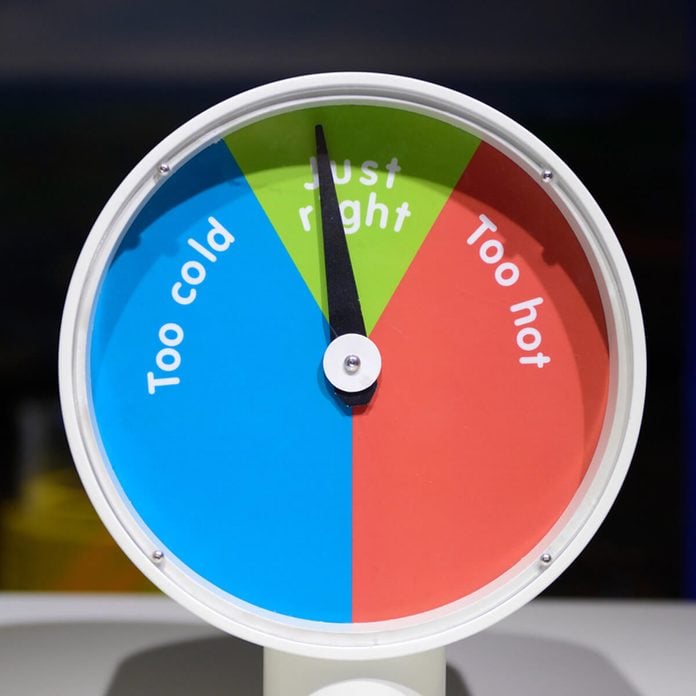
Understand the Basics
Before committing to a garage refrigerator, it helps to understand the dynamics of how a fridge works. Without getting bogged down in the details, modern fridges function by comparing the freezer temperature to the outside environment, lowering the temperature as needed, and blowing excess cold air from the freezer area to the fridge area.
This balancing act means a refrigerator or freezer will struggle in a garage without heating or cooling. Excessive heat will force a garage refrigerator or freezer to work extra hard to keep cool, wearing itself out and sending your electric bill into the stratosphere. And freezing temperatures will confuse your freezer, making it think that it’s already reached the proper level of refrigeration. As long as the exterior temperature stays below freezing, your freezer will sit idle, letting its contents thaw out. Once you understand these parameters, you will be able to determine whether adding a refrigerator is the right garage upgrade for you..

All Climate Is Local
If you spend most of your time inside in conditioned air, you might be oblivious to the challenges of your local environment. Unless you’re OK with spending a lot of time and money to repair your refrigerator, take an honest look at the climate in your region in general, and in your garage specifically.
Possible issues for your garage refrigerator vary by geography. A garage fridge in Arizona may struggle in the heat without much problem with humidity, while one in Louisiana might deal with rust on its coils. Identify the specific threats your fridge will face, and you can help ensure that it will last longer and run efficiently.
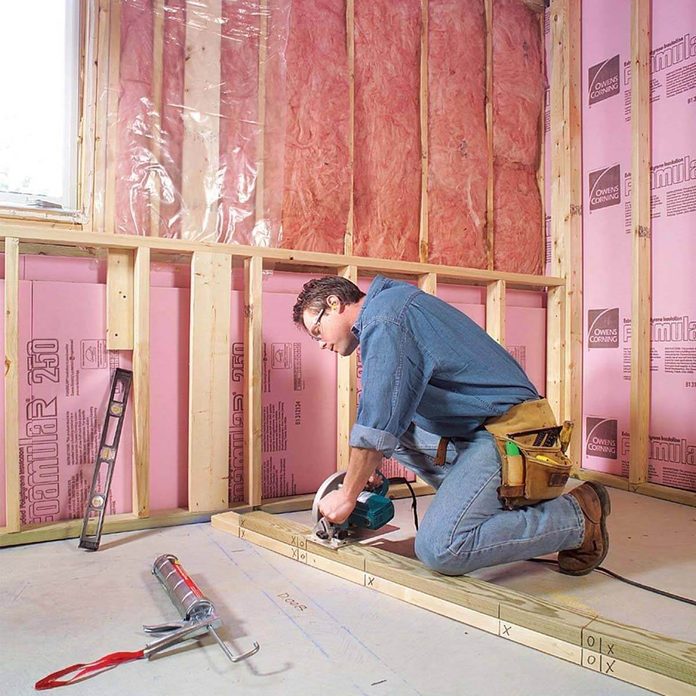
Build an Enclosed Conditioned Space
The ideal approach to keeping your garage refrigerator running at peak performance is to regulate the garage air temperature. This may be carried out by heating or installing a garage air conditioner. Since this may involve retro-fitting the garage with insulation and venting, it will likely get expensive quickly. A better option is often to condition a small space within the garage, by framing an enclosed space around the fridge.
This allows you to moderate the heat and cold only around the fridge. As a bonus, a climate-controlled space allows you to store other temperature-sensitive items like paint without worrying about them freezing or overheating.
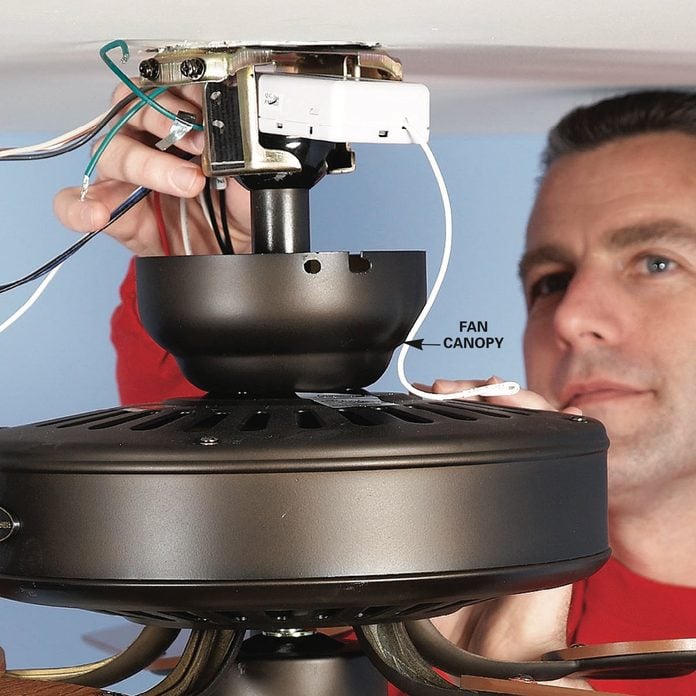
Keeping Things Cool
If building an enclosure to cool or heat a garage fridge isn’t in your budget, or you simply aren’t interested in that large of a project, there are simpler options available depending on your local climate.
If your garage tends to get too hot (more than 100 degrees F), you may benefit from setting up a fan to increase airflow over your fridge’s cooling coils. A ceiling fan will work, or a pedestal fan set up to one side. Just make sure the air is moving across and around the back of the fridge. If your local climate is humid, a dehumidifier helps keep things dry inside the garage. (A dehumidifier will also help reduce the risk of rust on tools and other items stored in the garage.)
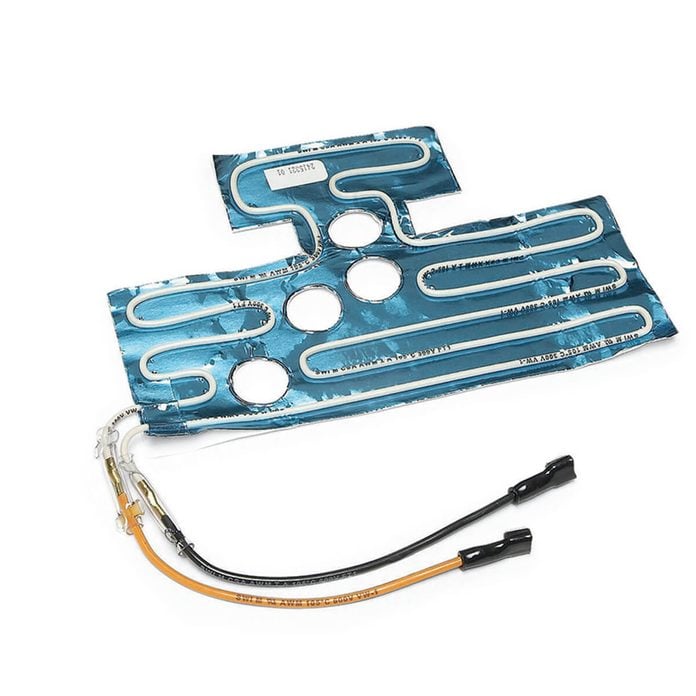
Fridge Heaters
If your garage temperature dips below freezing, the thermostat inside the garage refrigerator’s freezer may think it’s cold enough and shut off. To work around this issue, you need to heat the air around the thermostat. One way to make a garage refrigerator work is to install a heating coil around the thermostat. Many manufacturers make heating coils for their refrigerators and freezers. Or you can buy a generic heater.
Another option is to put a metal clamp-on work lamp near the fridge. Put an incandescent light bulb in the lamp and direct it towards the thermostat. The exact location of the thermostat varies from model to model. But a little bit of experimentation should be enough to locate it.
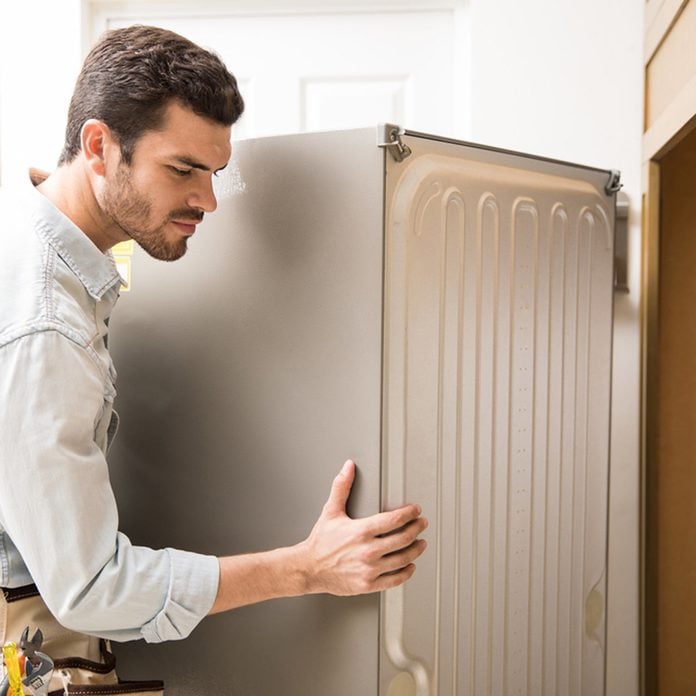
Newer Isn’t Always Better
Many people grew up with a garage fridge that ran for years without issue. Counter-intuitively, newer fridges often struggle more in a garage than older units. Because newer fridges are often designed to run as efficiently as possible, they are more susceptible to swings in environmental temperature.
Installing a new refrigerator in a non-conditioned space where the temperature falls below freezing or above 100 degrees F will almost certainly violate the warranty of a standard residential refrigerator. Should you need repairs on that fridge, it may not be covered. So an older unit is usually a better choice for a garage.

Tailor-made Garage Refrigerators
So if you lack a spare older fridge and newer units don’t do well in unconditioned space, how are you supposed to have a garage refrigerator at all? Do what your parents did: Replace your kitchen fridge and move the older one to the garage. Another option is to buy a refrigerator that is garage-optimized.
Garage-optimized (also known as garage-ready) fridges and freezers are designed to take the extreme temperatures and humidity that give standard units problems. And they’re great for eliminating the stress of unexpected repairs. But be sure to do your research before pulling out your credit card. Some units are built for heat but not cold, and vice versa, and they all carry a premium price.
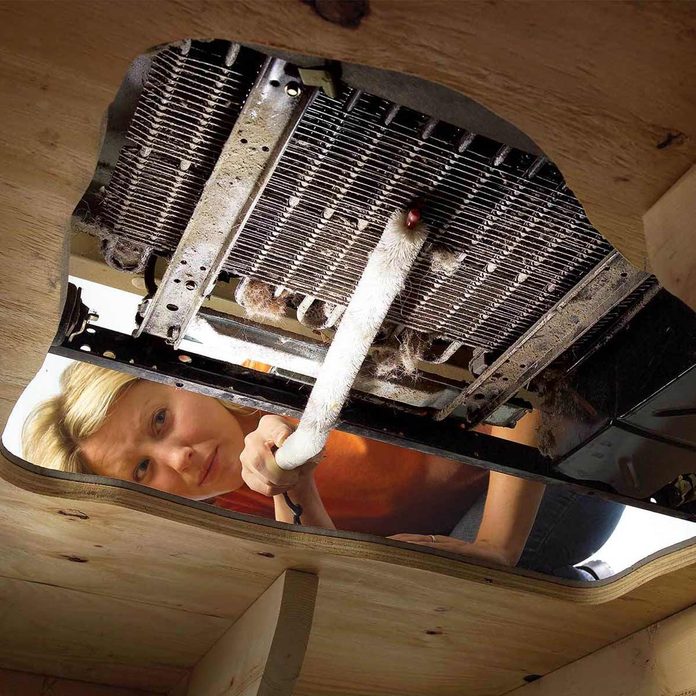
Clear out Garage Debris and Clutter
Besides temperature swings and humidity, garages carry other dangers to proper appliance operation. Most DIYers have garages with a fair amount of sawdust and grime, both of which can collect on a garage refrigerator’s coils. In addition, many garages serve as de facto storage units. Organize your garage so that boxes and clutter don’t have a chance to pile up on and around the fridge, limiting airflow and restricting its performance.
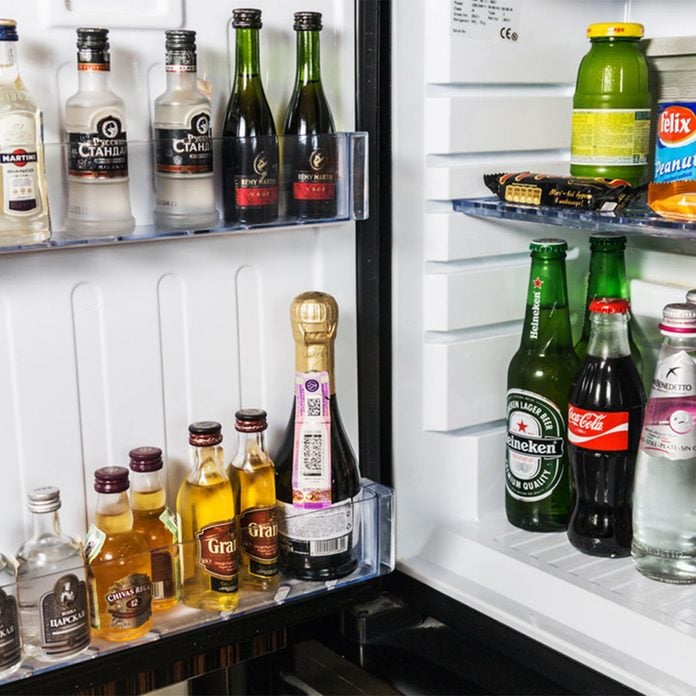
Stack Smart
Just like stacks of clutter outside the fridge can impact its performance, what you put inside the fridge can affect it as well. Ask any appliance repairman. And you’ll be shocked to hear how often fridge troubleshooting reveals that too many or too few items in the fridge are the source of inefficient cooling.
Stock your garage refrigerator with enough items that it isn’t just cooling empty air. Every time you open and close the fridge door, the air is sucked out and replaced. The items in the fridge act as natural ice cubes, helping to cool the new air and preventing the fridge from working too hard.
On the flip side, too many items in the fridge block the blower, preventing cold air from circulating in the unit. This allows the items to warm up, and you’ll soon find yourself pulling warm beverages from the fridge.
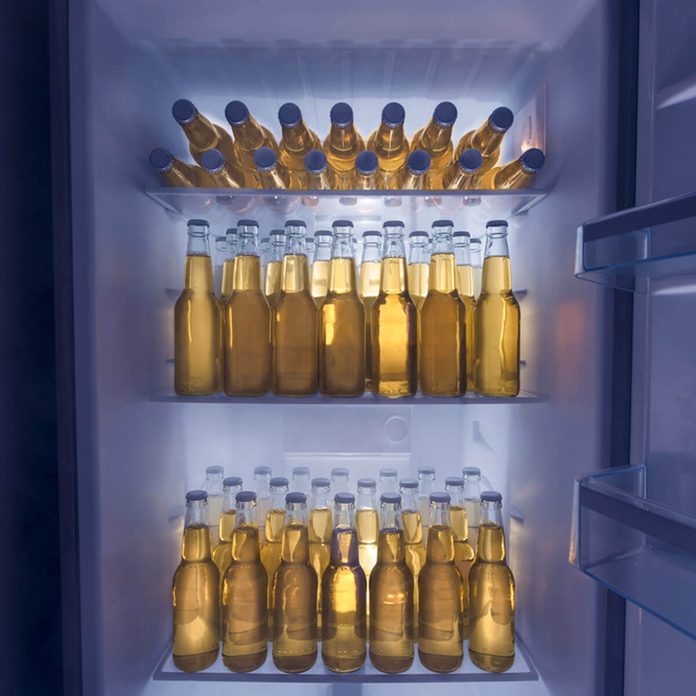
Plan for Failure
Perhaps the best tip for a garage fridge or outside refrigerator is to plan for eventual failure of the unit. And if possible, keep food prone to spoilage in the kitchen fridge and freezer. Also, stock the garage refrigerator with items that won’t spoil if they lose refrigeration. Beer and other beverages work great for this, as they are low risk and help keep the beer fridge cool if you lose power temporarily.